Turns out, after writing yesterday's post, I scored a killer deal on some rabbits, my friends. A local man was looking to get rid of his four does and buck – he'd been breeding and selling the babies for Easter Bunnies.
After driving out to see the rabbits and getting a mini-farm tour, we decided to go for it. The price was right and we'd just had a teeny bit of extra money come in from tutoring.
The main problem with the rabbits it that we're not 100% sure of the breeds. My cousins used to breed and show rabbits and I'm sure they could tell me – but I'm afraid to ask them because if they find out I'm planning on breeding them for meat production, I'm sure they'd be mortified.
Actually, I know they'd be mortified.
Sorry, Kiley. Sorry, Kacie. Sorry Aunt Lynn. But girlfriends gotta eat.
Does anyone know what these are?!
All that being said, because we'll be in Washington next week, the seller even offered to keep them for us until we got back. Thanks, Tom!
When I looked into local rabbit breeders, I did find another one in Mobile (about thirty minutes away). The does and bucks were $15 a piece. Because we were originally hoping for two does and a buck, we'd be looking at about $45 total.
From Tom, we were able to purchase the four does, one buck, water bottles, feeders, and cages for $90. A small investment when I think about how quickly the payoff in meat could be.
Of course, assuming all goes according to plan. Ahem.
Once we pick up the rabbits, we'll breed two of the does immediately. The gestation of a rabbit is about 30 days, so we'll have new little ones very quickly. They will remain with their mother for about five weeks, at which point they will be weaned. After that, they will continue to be fed for another seven weeks until they reach about 5-7 pounds.
After that. Well. You know what happens.
An average rabbit will dress out at about 3 pounds. Now bad for one little rabbit! That's plenty for a few meals around here.
We should be able to have our first harvest of meat around May, and assuming the liters are about 8 kits or so, that would leave us with about 16 rabbits to harvest.
The second does will be bread just a month later, so we should have another harvest of 16 or so by June.
And then, well, the process repeats itself as many times as we'd like. It's also possible to keep a few does from the litters and breed them as well, but for starters, we'll keep it small and get a good understanding of the process.
The cages will work well for right now. The bottoms are open enough that we may be able to graze them slightly on some of our weeds around here. I'm also hoping to get in touch with a few local produce stands and my farmer to see about getting the vegetables that are too old to sell. I know it's important to be careful about the amount of greens they receive, but it'd be nice to supplement some with them.
Bulk grains, such as barley, oats, etc. will be purchased through the local feed store. I'll also need to find a local source for some alfalfa.
Because I'd like our homestead to be economically sound and balanced (these rabbits aren't entirely for fun, they serve an important purpose – food!) I will be keeping close documentation of all of our feed costs (as well as our breeding records, naturally). This way, I will be able to know exactly how much we are paying per pound of rabbit meat produced. Will it be profitable?
Don't worry. I'll be sure to let you know.
Naturally, the start up costs of such an operation are the highest. It will take a few litters of rabbits to offset the original $90 we will be investing into the rabbits and cages.
Now, if only I could milk a rabbit…

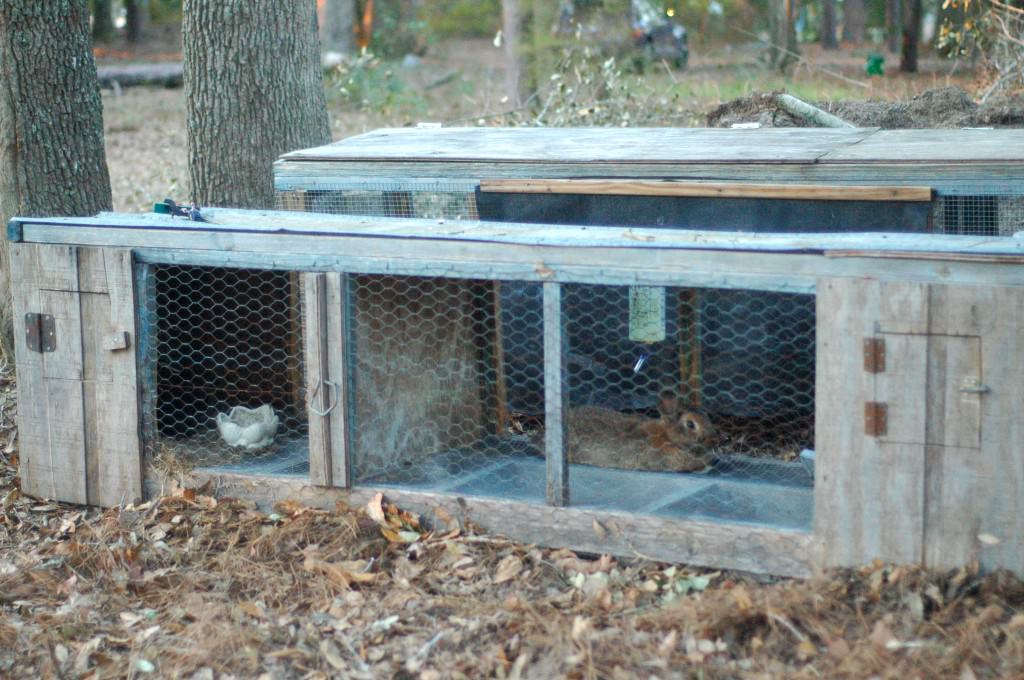
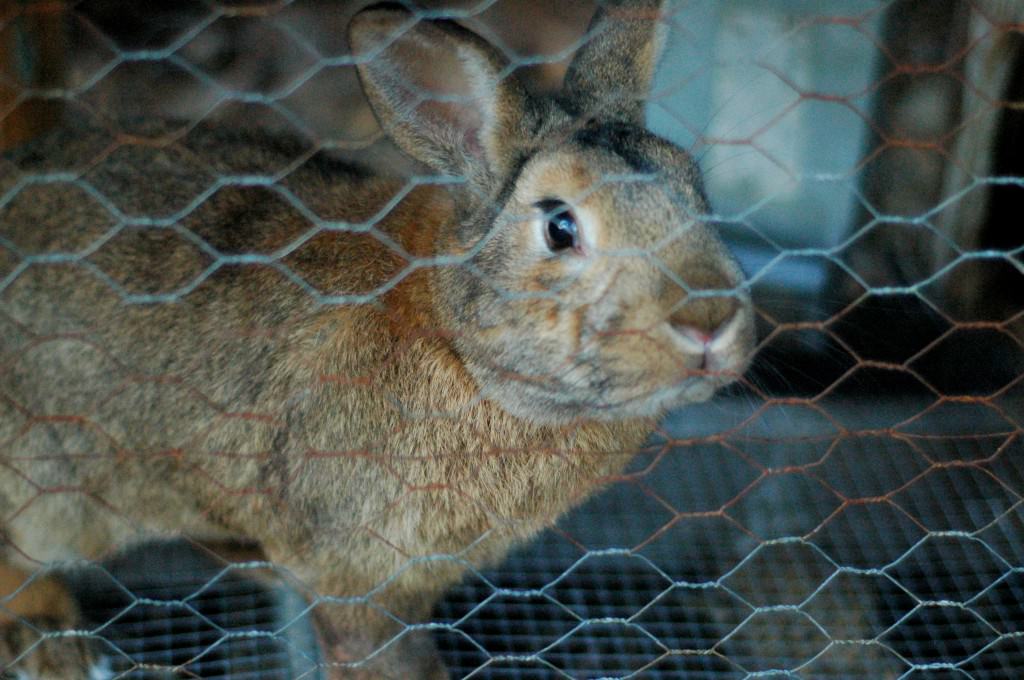
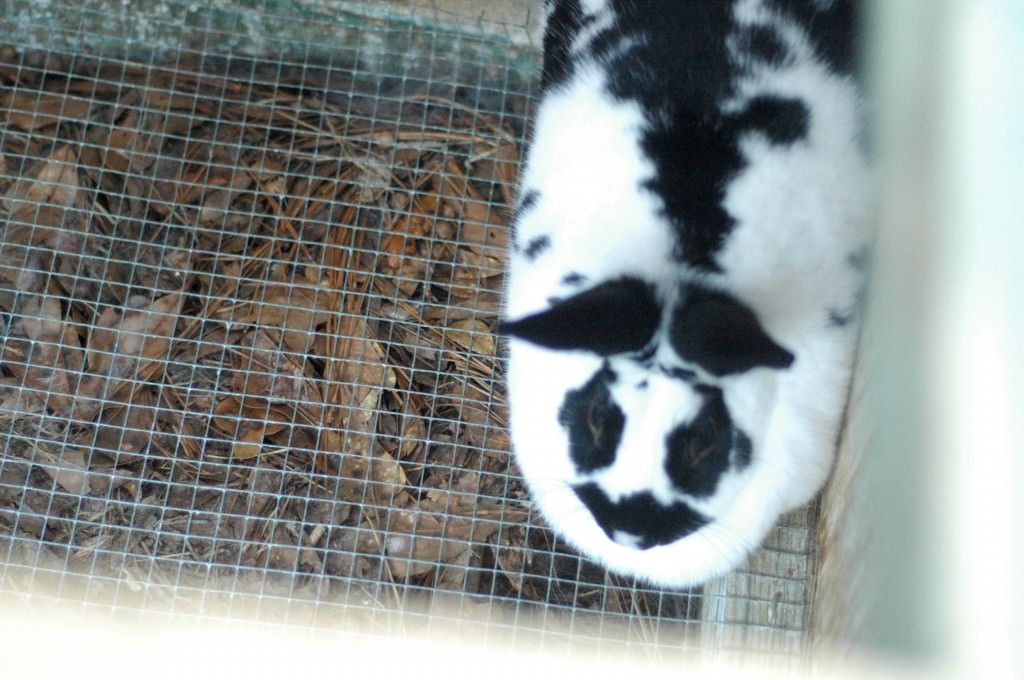
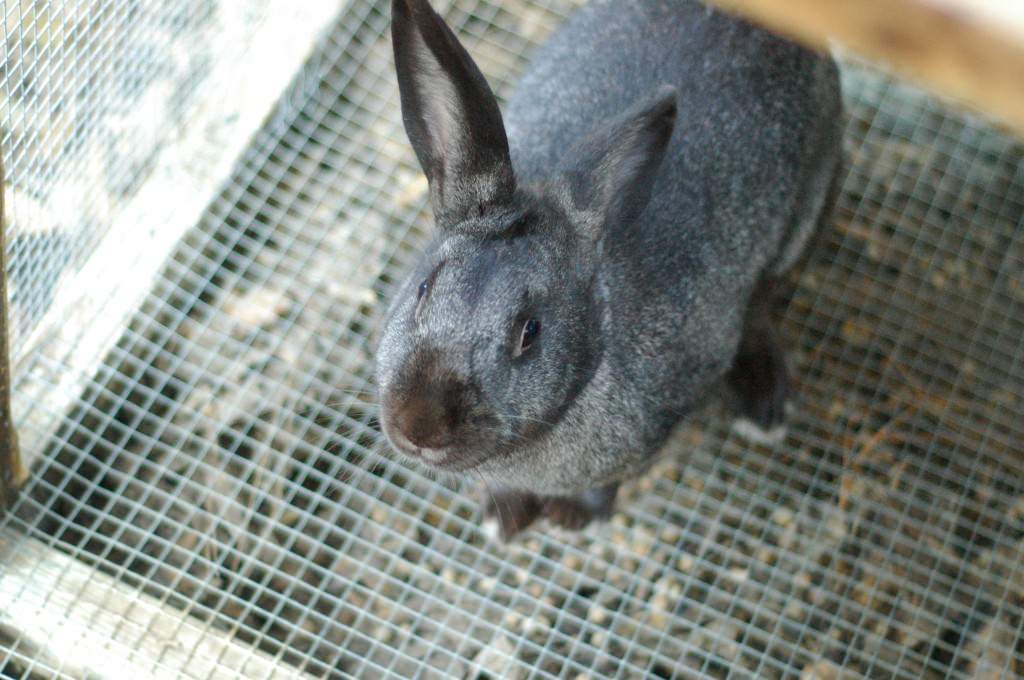
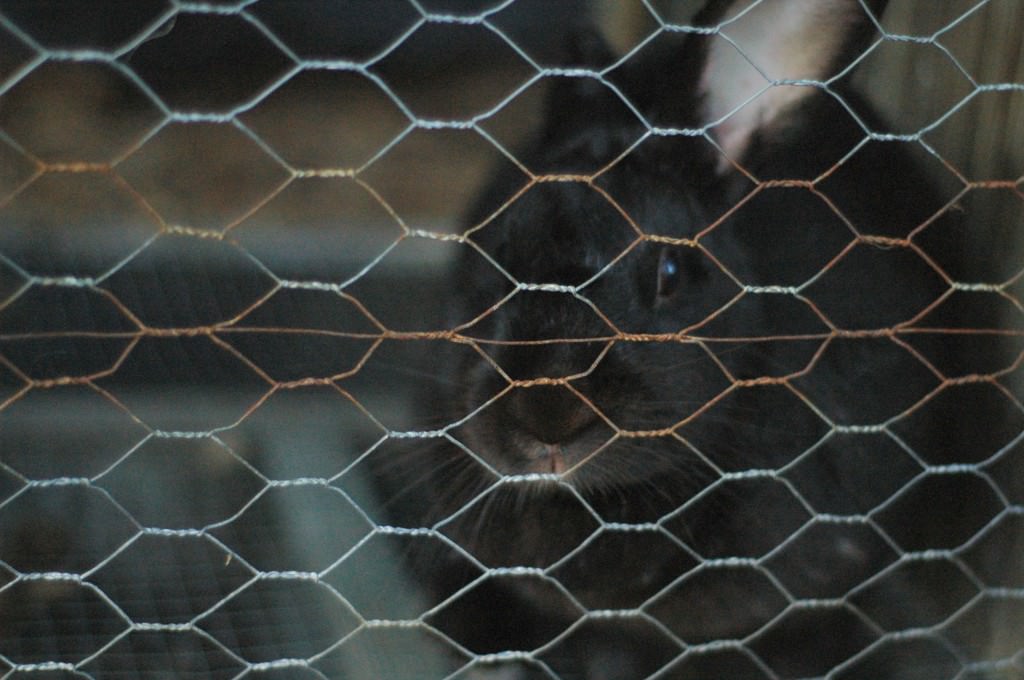


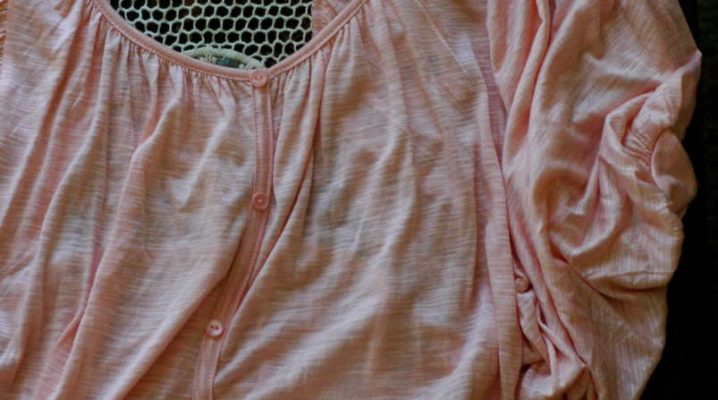
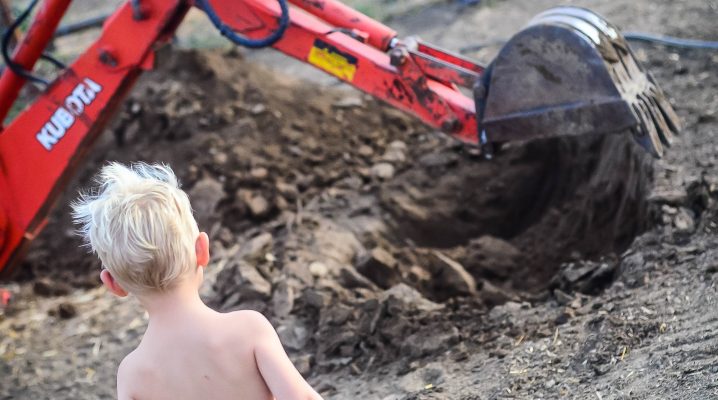
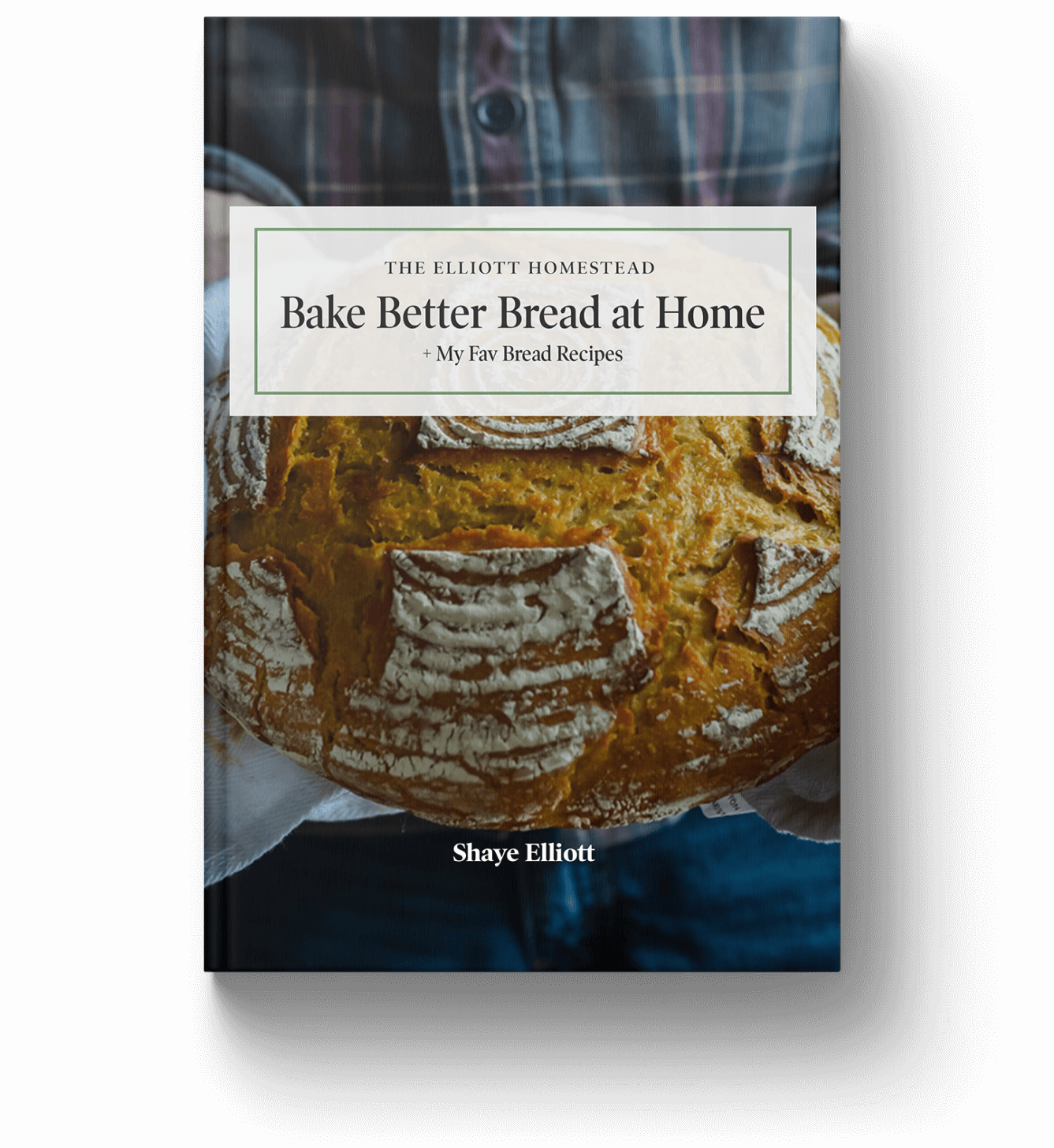
What a great bargain! You would have paid at least $90 just for the materials to build the pens. Best wishes on the rabbits…I’m not there just yet! Milk a rabbit–hilarious!
I just came across http://fmicrofarm.com/2013/01/29/luke-i-am-your-fodder/ yesterday and thought you might be interested. I am thinking of using this for my chickens but the beauty is that it can be used for rabbits too.
This is so exciting. Yay!!! Keep a sharp eye on neighbor dogs (not sure if you have any roamers, we do unfortunately) they can easily get through chicken wire. Can’t wait to see little bunnies. Georgia’s gonna love them!
Sounds like a great plan! I don’t know what breeds the rabbits are, but my dad used to tell me a story. See his parents were also breeding rabbits for meat. And when he was little at a certain point he got so fed up with eating so much rabbit meat, that he switched his sandwich with rabbit meat with the sandwich of a poor boy that had a topping of a really thick layer of lard. The moral I got out of the story is that his parents were probably not careful/controlling enough of the breeding process and had too many rabbits 😀 But nevertheless I’m sure you thought of that. So good luck!
I couldn’t tell you the breeds, but I’m sure they’ll taste fine. 🙂 I didn’t have a chance to comment on your last post, but we raise New Zealand Whites and we just got a flemish giant doe. We did the grazing thing with hardware cloth (looks like what’s on the bottom of your cages), but it wasn’t great. We then decided to raise the cages, so that we could harvest the manure, because it can go straight into the garden (it’s not ‘hot’ like other manures) and it’s super beneficial. Until we figure out the whole rabbit colony thing, then they’ll stay in their happy cages. During the summer we put frozen water bottles in their cages and keep them in the shade, because Southern Summer heat/humidity is brutal. You got a GREAT DEAL for the animals, supplies and cages and I think you’ll find rabbit to be much more economical than meat birds (chickens). We raise both and the rabbits are the most efficient meat around here. If y’all are ever in Savannah, before your first “processing” (nice way to say butchering) then, come over for a quick tutorial. Otherwise, I’m sure you-tube has some videos. After all that’s where we learned how to castrate boars. yikes. Congratulations on your newest venture!
What a blessing that you were able to get such a great deal on everything! That’s fantastic!
And I hope you’re starting to think of every possible way to prepare all the rabbit meat you’re going to have:
Roast, fried, stewed, pot-pies, can you grind rabbit meat to make meatballs and such?
Rabbit Pot Pie is awesome! And I have seen one farm that does sell ground rabbit, although it seems that it would be a pain to process.
And you will need to plan on replacing the adult rabbits after a time. (old rabbits don’t breed as well) and make sure to not mate siblings because they do not produce healthy rabbits.
That is not true. Inbreeding in rabbits is a perfectly viable solution unless you just can’t wrap your mind around it. The only time it is a problem is when both brother and sister have inherited some negative characteristic or deficiency in their immune system for a particular illness. Then they will pass it on. But if you are selectively breeding only your healthiest stock, you should never have to worry about that.
In fact, inbreeding is a great way to ensure that the good characteristics of the parents are passed down as your rabbitry moves through the generations.
What a FANTASTIC deal! I’m sure you’ll make up the difference in no time. Think about maybe even tanning the pelts when you process. The agouti (brown one) you have will make mostly more agoutis since it is a dominant color and those would make some beautiful crafts
I hate to rain on the parade but I disagree with others. The initial investment you make in your rabbits and the cages is the smallest part of the investment you will make. Food cost is the big investment. If you have poor quality rabbits, or rabbits that don’t convert well, or have poor meat to bone ratios you will pay much much more over time in feed per pound of meat you produce. I suggest you invest in some good quality NZ or CA rabbits. They will be worth the cost. Futhermore, your intire breeding stock will likly be from these rabbits. If they are not great quality the offspring they produce will not be that great either. David
I’m keeping track of these rabbit posts for the future…we’ll need to wait til we’re not in an apartment anymore, but I will definitely try to convince my hubby to do this too.
We have been raising our own meat rabbits for a few years, and my husband has contacts all over the county of other people that raise meat rabbits. I agree with Fogcity Rabbitry that you need to have the right breads of rabbits to really get your money back in the meat. The most common are the New Zealand and California rabbits, and we raise American rabbits, which is a heritage bread meat rabbit that was really popular back in the 30s. The meat bread grow quickly and they are the ones that are going to give you the 3lbs of meat! If the rabbits you have were being raised to bread little eater bunnies I don’t think they are going to work for meat for you family. My husband has sold a lot of our rabbits to families that only wanted them for meat purposes as a great deal because they are usually the off colored ones that we would have been putting in our freezer anyway. My husband has helped lots of people get started with rabbits and has a lot of good tips for getting started. We really love having our own meat in the back yard that we have raised and fed their whole lives! Good luck in your new adventure and we would love to help in anyway if you have any questions.
Krista, as a fellow rabbit breeder of NZ whites, I agree that the breed is important; however, just because NZs and Cals are the most popular does not mean they are the only ones that make good meat rabbits. For self consumption, I would say that IN GENERAL, any breed that is not a DWARF or GIANT will satisfy the needs of a family. Also, rabbits with the COMMERCIAL body type are meat rabbits; whereas FULL ARCH rabbits such as Checkered Giants (which is also a Giant and falls under my first classification as well) or the Belgian Hare are too lean and do not convert feed to meat efficiently. I do believe that Silvers, such as the “Grey doe” make good meat rabbits. Time will tell, and I would never turn down a deal like the one Shaye and her family got when their only focus is home production. If they were producing to sell, it would be a different story.
Hi,
I am a fellow rabbit raiser/breeder. I specialize in meat producing rabbits as well both for my own consumption and for sale (to earn a profit on my investments). I had a few tips and suggestions to offer, also some answers to your questions.
The grey doe appears to be a Silver, a beautiful specimen as well. The black and the black and white (called broken in the rabbit industry) could be New Zealands. It really depends on their weights. And the brown one…well it could be anything just about. It almost looks like a wild cottontail. Either way, if you are raising for yourself, they seem to be nice specimens for personal use.
Also, I don’t know how you got away with feeding greens to the babies but I guess if it works, do it, but I would be wary about feeding babies under four weeks too much greens as it CAN cause diarrhea. Cabbage is especially gassy, so if you are feeding wild grasses, I’d stay away from cabbage for the babies. I like to feed my rabbits feed from the home garden as well. They love turnip greens and turnips. It seems to make them happy. Most people do feed a diet of pellets (which consist primarily of alfalfa, oats, and hay) and fresh hay. Unlike commercial chicken feed, rabbit feed does not use GMO corn and other non-organic grains.
Sorry if I sound a bit preachy, but I’d hate to see you lose a litter of those little cuties to diarrhea. If you have any other questions, feel free to visit my facebook page and message me. I’m always happy to help.
do you sale rabbit